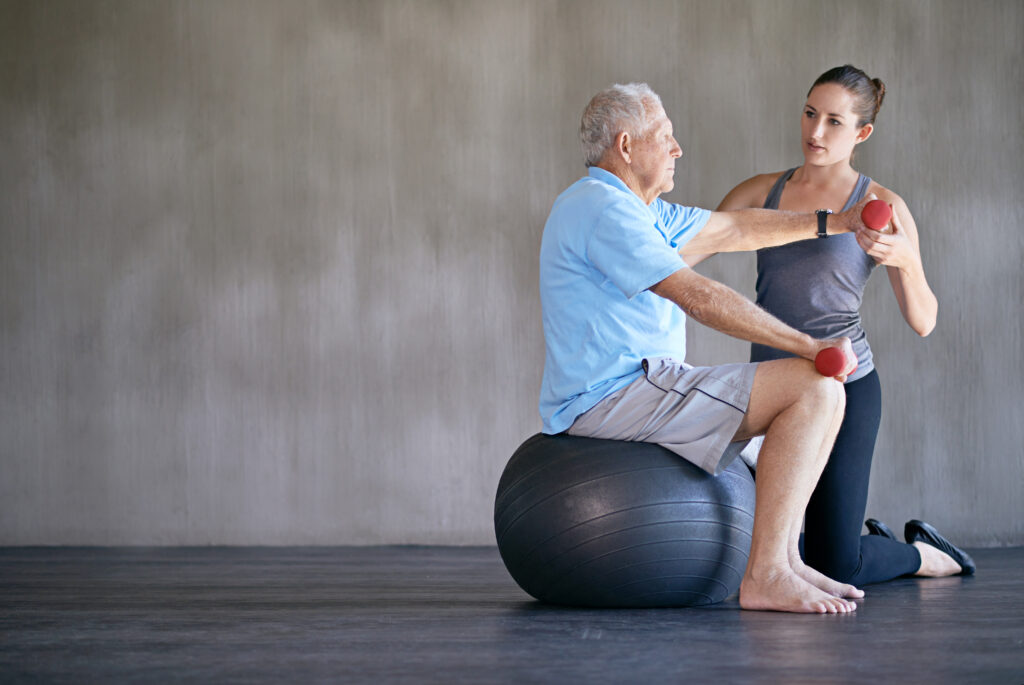
Preparing for the Ontario Clinical Exam
How to Prepare for the Ontario Clinical Exam
This page includes information and resources to help you prepare for the Ontario Clinical Exam (OCE). We recommend you review all of it.
Candidates must also carefully review all technology requirements and exam policies.
Please note: The College does not endorse or support any exam preparation courses offered by private companies.
Exam Format
The Ontario Clinical Exam is a three-hour exam during which candidates have their performance evaluated by two examiners. The exam explores a candidate’s knowledge, skills and abilities using a structured interview format.
The Ontario Clinical Exam includes two case studies that allow candidates to share how they would approach assessment and treatment.
The exam also explores candidates’ ability to navigate challenging practice scenarios that emerge during patient care. One case will focus on the musculoskeletal system.
Case 1 Covers:
- Accepting the patient (assess personal knowledge and appropriateness for physiotherapy)
- Informed consent
- Clinical examination
- Clinical impression and recommendations
Case 2 Covers:
- Developing a treatment plan
- Developing goals, patient collaboration
- Collaboration, consultation, and referral to others
- Monitoring, reassessing, and modifying the plan, and/or promoting self-management
- Discharge planning or transitioning care
Exam Blueprint
The Ontario Clinical Exam Blueprint describes how the exam is developed. It provides explicit instructions and guidelines on which competencies are measured in the exam, including the context of specific areas of practice.
Exam Blueprint
Sample Questions
Sample questions coming soon
Candidate Demo Site
The candidate demo site allows test-takers to familiarize themselves with the exam delivery platform before exam day.
Access the demo site
Login Information
ID:Training
Password: thisisademo
Candidates should also watch the Exam Delivery Platform Demonstration Video before their exam day. The video shows candidates how to use the exam delivery platform for the virtual Ontario Clinical Exam.
How to Prepare for the Exam
- Review the exam blueprint
- Review all College standards and associated resources, including e-learning modules
- In particular, you may find the Transitioning to Practice in Ontario Learning Modules and the Patient Centred Communication Module especially useful
- Practice speaking out loud, explaining what you do during assessments and treatments and why
- Review the Clinical Reasoning Framework Activity
- Practice providing specific answers. Non-specific answers or answers that are generic will not be accepted
- Use exam preparation companies at your own risk. Memorized answers are obvious to examiners and do not reflect actual knowledge. Memorizing answers does not prepare you for independent practice. Your exam will be flagged for review if concerns are identified.
How to Set Up the Room Where You Are Taking the Exam
- Your room should be tidy, private, indoors and free of disturbances
- No recording devices are permitted in the room or within recording distance of the room
- You must be alone in the room, including no pets
- All items should be removed from the walls
- All large mirrors and artwork that cannot be removed from walls should be covered with a plain towel or sheet
- The room should be as bare as possible, meaning ideally it has just a desk and chair. It is OK to have a bed, couch or other furniture in the room, but any drawers should be closed tightly
- All whiteboards, chalkboards and corkboards on walls should be removed or covered with a plain cloth or towel
- The room should be well lit with no shadowy corners
- The proctor may ask to see inside any closets during the room scan
Items You MUST Have with You on Exam Day
- Government issued identification for candidate verification and any documentation to support name changes
- Device with audio capability or wired headset, webcam, and microphone
- Cell phone
A Note About Cell Phones
You must have your cell phone with you during the exam. Be sure that it is fully charged. Before proctoring, College staff will contact you on your cell phone if they notice a delay in your login or if you are not connected to the exam platform.
To avoid missing our call, please add the College of Physiotherapists of Ontario phone number (416-591-3828 ext. 215) as a contact and allow notifications from this phone number. During proctoring, you will be asked to turn off your phone and put it out of arms reach.
You cannot use your phone during the exam for any reason other than contacting the College for support purposes if you experience technical difficulties.
Items You Can Have with You on Exam Day
- Prescription glasses – non-tinted
- Sweater – worn or on the chair
- Tissues – small amount on the desk
- Small snack with no labels
- Clear container with a drink – glass or clear bottle
- Personal medication in a clear container
- Assistive devices like a walker, cane, scooter or wheelchair
- Religious head coverings
- Medical devices
- Ergonomic supports – footrest, backrest, keyboard, mouse
- One-sided whiteboard with markers; the white board should be a maximum of 9 x 12 inches in size
What to Expect on Exam Day
- Wear comfortable clothes.
- You will receive your log in information by email by 9:30 p.m. the night before your exam.
- You can log in to the exam platform one hour before the exam start time. You must be logged into the exam platform 30 minutes before your exam start time.
- When the exam starts, you will be asked to share your screen. Select your entire screen and click OK. If you accidentally click no, click disconnect and then click connect to be prompted to share your screen once more.
- Close all other browsers, windows and apps. Put notifications on silent or do not disturb. Exit your email.
- The proctoring process can start as early as 30 minutes before your exam time. The proctor will:
- Verify your identification (government issued photo ID),
- Conduct a room scan which can include any closets and under the desk and chair,
- Ensure your phone is turned off, and
- Review your screen share for any apps, tabs, or browsers that remain open.
- You may be in the waiting room for a while. You are being recorded as soon as you enter the waiting room. Proctors and College staff are monitoring for quality and security purposes.
- Your two examiners will enter the virtual waiting room before the exam starts. They may say “Hello” but they cannot engage in conversation.
- You have three (3) hours to complete the exam.
- You can take washroom breaks between questions or cases, but no additional time will be granted for these breaks. Your camera must remain on and your phone must stay in the exam room when taking a washroom break.
- You cannot go back to change your answers or add to your answers once a question is complete.
- Case information is available in audio and written format.
- You can take notes on your whiteboard or in the exam platform.
- Examiners will ask you scripted questions and deliver scripted instructions. They will have a neutral demeanour during the exam. Examiners will move on when you have provided them with enough information. This may happen before you say everything you wanted to say. They may ask you additional questions if they need more information, this does not impact scoring. Examiners will not be able to provide you with any feedback.
- If you are unable to start the exam on time because of technical issues, delays at proctoring etc., staff will work with you to address the issues and you will be given extra time.
Your Exam May be Cancelled If
You log in to the exam from any device other than a laptop or desktop computer
You use a hotspot or mobile phone connection as the Wi-Fi source for the exam
You intentionally tamper with technology
You have any applications or windows open on your device, other than the exam platform window
You use audio/screen recording applications or devices
Your cell phone remains on after proctoring has been completed




